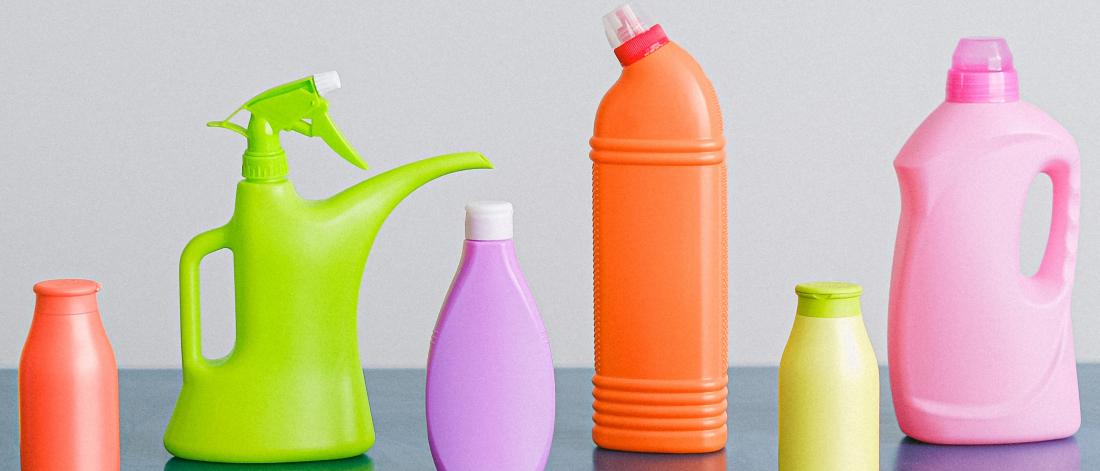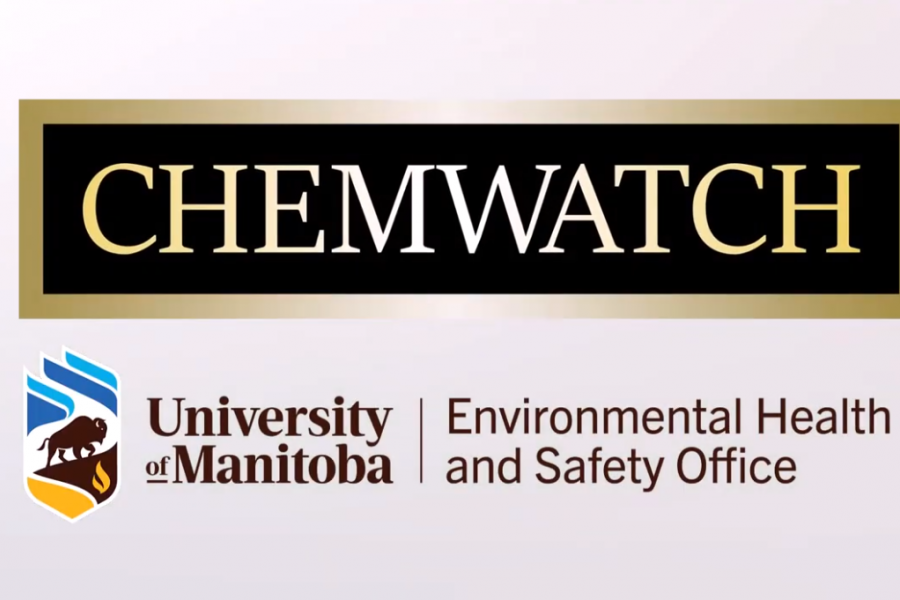Chemical safety
The Chemical Safety Program facilitates and ensures the safe and knowledgeable use of chemicals in the workplace, lab and classroom.

Chemical safety
Chemical safety training
The Chemical Safety Program provides training for all employees and students who work with or may be exposed to chemicals. Chemical Safety training must be completed prior to beginning any work with chemicals. The Chemical Safety online course at the University of Manitoba can be accessed and completed through UM Learn.
Chemical risk assessments and procurement
It is important for us to assess the risk to health and safety of the chemicals we use to understand the potential for any negative effects on both people and to the environment. This assessment may alter if and how we use these chemicals in a work and research environment. Information on how to assess chemicals can be found within the attached document below titled Chemical Safety - Risk Assessment and Procurement. For assistance on any chemical risk assessments contact EHSO.
Chemical inventory
Maintaining an accurate chemical inventory is critical for laboratory safety, regulatory compliance, and environmental reporting.
At the University of Manitoba, chemical inventories are managed using a digital system called Vertére. Managing your chemical inventory in Vertére ensures that records are always up-to-date and easily accessible, making it simpler to track chemical stock levels, share chemicals between labs or departments, and respond effectively in case of emergencies or audits.
A well-maintained inventory also supports better decision-making for purchasing, storage, and safe disposal, while helping the University meet all legal and regulatory requirements.
Instructional materials and additional information are provided below.
Chemical Safety - Inventory Management and WHMIS (PDF)
Use the following videos to get started on using Vertére to manage your chemical inventory.
Labels
All chemicals require specific labelling to inform workers of the hazards associated with the materials they are working with. When a chemical has lost its supplier label, is transferred into a secondary container, or is a new, synthesized material, you can use the following workplace labels on containers:
Safety data sheets
SDSs provide important information including the handling, storage, and first aid measures associated with a particular chemical. SDSs must be readily accessible by those working with the chemical. SDSs may be saved digitally or managed locally in binders, speak to your supervisor or WHMIS Coordinator to find the location of your SDSs.
The University of Manitoba is in the process of moving all SDS binders onto an online software called Chemwatch. If your SDS binder has already been relocated, you can use the following link to access SDS by using the search boxes:
Safety Data Sheet Poster (PDF)
The Safety Data Sheet poster will be provided by EHSO in either a poster or sticker and is not required to be printed from this site.
If you are a designated SDS Manager for your area or lab, please contact EHSO to have those privileges added to your Chemwatch account. Contact EHSO directly for help with finding an SDS or managing your SDS binder on Chemwatch.
WHMIS coordinators
A WHMIS coordinator assists departments and program areas at the University of Manitoba in complying with provincial WHMIS legislation. WHMIS coordinators may be required to attend meetings to discuss relevant topics including:
- WHMIS requirements at the University of Manitoba
- WHMIS training on UM Learn
More information regarding WHMIS and the WHMIS Coordinator role can be found in the Chemical Safety section of the EHSO page on the UM Intranet.
For help implementing a WHMIS Coordinator in your area, contact EHSO.
Storage and handling
Chemicals must be stored, handled, and transported properly to prevent chemical exposure, injury, or release. Contact EHSO directly if you don't see the information, you are looking for.
Chemical Safety- Storage (PDF) Chemical Safety- Handling and Transporting (PDF)
Safe work practices
Handling liquid nitrogen (PDF) Compressed Gas Cylinder Guideline (PDF)
Signs for storage and handling:
Flammable Refrigerator Storage Sign (PDF) Flammable Safety Cabinet Sign (PDF)
Chemical waste
When chemicals are no longer needed or useful, but still have hazardous properties or contain hazardous ingredients, they are considered hazardous waste. They must be properly managed, which can include sharing with another lab or disposal through the Hazardous Waste Program. Please see the Hazardous Waste section on the Hazardous Materials UM Intranet page for more information.
Chemical safety lab permits
Lab and storage spaces that meet threshold quantities of chemicals are required to have a chemical safety permit. Chemical safety permits are administered through the Environmental Health and Safety Assistant (EHSA) database.
NOTE: If there are multiple researchers sharing a lab space, consider the total amount of chemicals in the lab, not just the chemicals under the control of each separate researcher.
| Chemical Type | Total quantity requiring a Chemical Safety Permit |
|---|---|
| Flammables(including aerosols) | > 4 litres or kilograms |
| Compressed or Asphyxiant Gases | Any quantity |
| Corrosives | > 4 litres or kilograms |
| Oxidizing | > 1 litre or kilogram |
| Toxic materials | > 4 litres or kilograms |
| Self- or - Water- Reactive, Pyrophoric | Any quantity |
| Natural gas | Any operational valve |
Spill response
A chemical spill is any unplanned release of a chemical. The severity and appropriate response to each spill may vary greatly according to the type and quantity of material spilled and other factors.
Minor chemical spills that do not pose an immediate threat to health and safety can usually be cleaned up by the employee or student involved in the spill. A major spill that presents an immediate threat or that requires additional planning and resources, may require the assistance of the Environmental Health and Safety Office (EHSO), Security Services, or emergency response services.
For details on how to respond to a chemical spill, refer to the “Chemical spill response procedure” below.
Spill Kits
Areas where chemicals are used or store must have a chemical spill kit readily accessible. These kits must be stocked appropriately for the volume and type of chemicals in the area. Pre-filled kits or items to restock or make a custom spill kit can be purchased through EPIC. More information, including recommended products, can be found in the “Chemical spill response procedure”.
Chemical Spill Response Procedure (PDF)
Chemical Spill Response Quick Reference Guide (PDF)
Safe Work Practices
Post exposure protocol for chemicals
Where an incident occurs that involves chemical exposure, special first aid steps may need to be taken. Chemical post-exposure protocol is covered in chemical safety training for all employees, students, and volunteers who are working with chemicals, and specific response steps may be included in on-the-job training for those who are working with higher-risk chemicals.
For more information on Chemical Exposure Protocols, please visit the Occupational Health page.
Contact us
Environmental Health and Safety
Room 191 Extended Education Complex
406 University Crescent
University of Manitoba (Fort Garry campus)
Winnipeg, MB R3T 2N2 Canada
P310 Pathology Building
770 Bannatyne Avenue
University of Manitoba (Bannatyne Campus)


